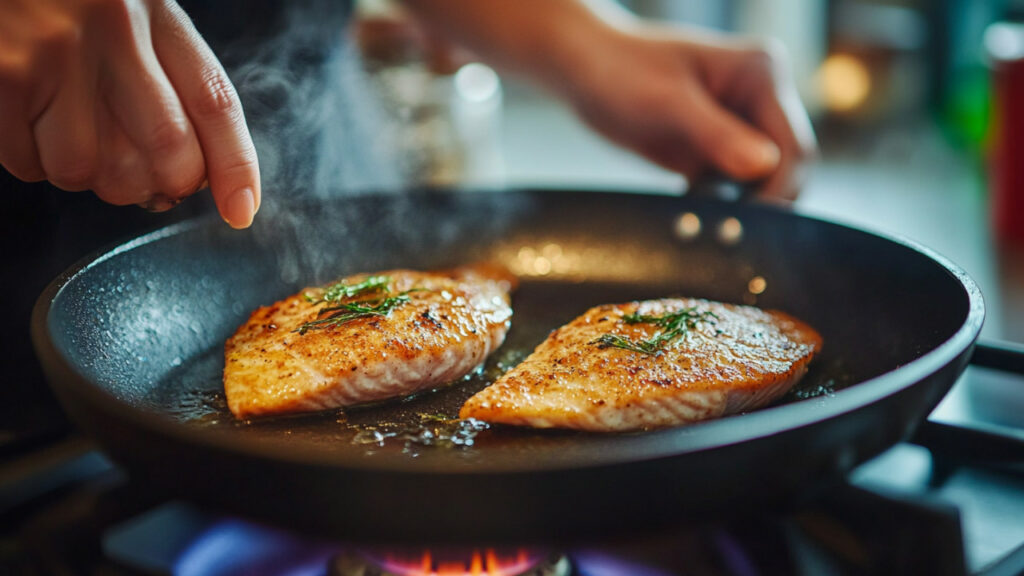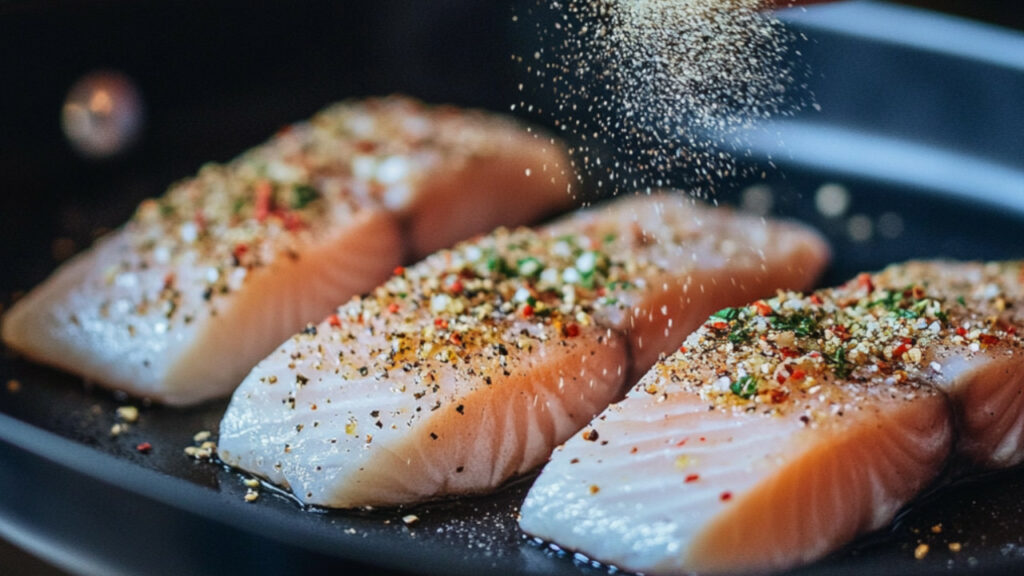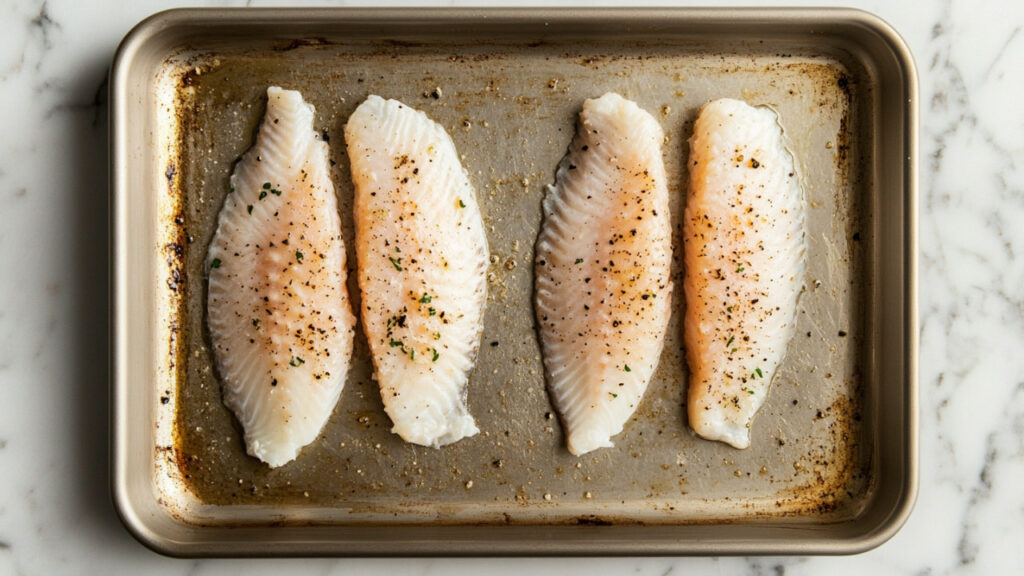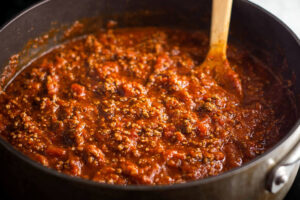Learning to cook frozen fish fillets can lead to tasty and healthy meals. This is great for busy weeknights or for those who are new to cooking in their first apartment. These simple recipes will help you feel like a cooking expert. Whether you like a crispy outside or a soft, flaky inside, knowing a few basic techniques will let you make yummy seafood dishes with ease!
Understanding Frozen Fish Fillets
Frozen fish is now a common choice in many kitchens because it is easy to store and lasts a long time. When fish is frozen quickly after catching, it keeps its freshness and nutrients. However, you should pay attention to how you thaw it.
If you thaw frozen fish fillets too fast, ice crystals can develop. This can make the fish mushy. It’s important to choose the right thawing method to keep the fish’s quality and taste. Later, we will talk about the best ways to thaw your frozen fish fillets perfectly!
Why Choose Frozen Fish?
Frozen seafood is easy to find at your local grocery store. It offers a simple and often cheaper choice than fresh fish. You can enjoy many types of fish all year long, without worrying about the seasons. Frozen fish also needs little prep work, which makes it perfect for busy nights when you need dinner fast.
Finding frozen fish is easy, and there are plenty of simple recipes around. This makes adding seafood to your meals very convenient. Whether you are a skilled home cook or just starting, frozen fish fillets are a good option to try.
Types of Frozen Fish Fillets: Tilapia, Salmon, and More
Frozen fish fillets come in many types to fit your taste and diet. Tilapia is a well-liked choice because of its mild flavor and lean protein. It’s very flexible and picks up different flavors easily.
Salmon is another great frozen option. It has a rich, fatty taste and many health benefits. You can bake, pan-fry, or grill it to make it just right.
You can also find frozen white fish like cod, haddock, and pollock. They each have a delicate taste and soft texture. Trying different frozen fish can help you discover new meals and make your dinner more exciting!
Preparing to Cook Frozen Fish Fillets
Before you start cooking frozen fish fillets, it’s important to get your equipment and ingredients ready. When everything is prepared, cooking will be easier and more fun.
You will also need to decide if you want to thaw your fish fillets before cooking them. Many recipes let you cook them directly from the freezer. Knowing the differences between thawing and not thawing will help you get the best results.
What You’ll Need: Equipment and Ingredients
Creating tasty fish dishes begins with the right tools and ingredients. Here’s what you usually need:
- Baking sheet: This is important for baking fish in the oven.
- Skillet: A nonstick skillet works best for frying fish.
- Air fryer: This helps you get a crunchy crust.
- Olive oil or cooking spray: These prevent the fish from sticking and add taste.
- Seasoning: Use salt, pepper, and your favorite spices and herbs.
- Lemon wedges: These give a fresh, citrus flavor at the end.
You can adjust the seasoning and ingredients to match what you like and the recipe you’re using. Try out different flavors to make your unique fish dishes.

How do you cook frozen fish fillets without drying them out?
To cook frozen fish fillets like tilapia or salmon without drying them out, start by rinsing the fillets under cold water to remove any ice crystals. Pat them dry with paper towels, then season them as desired. Place the fillets on a baking sheet lined with parchment paper or in a lightly oiled baking dish. Cover the fish with aluminum foil to retain moisture and bake at 425°F (220°C) for 12-15 minutes, or until the fish is opaque and flakes easily with a fork. Avoid overcooking to keep the fish tender and juicy.
What can I do to prevent my frozen fish from becoming too dry?
The primary thing is to not overcook your fish. That being said, you can help your fish fillets from getting dry by adding some moisture while cooking. You can bake them in foil, add a drizzle of olive oil, or use a gentle simmer. Also, if you pat the fillets dry with a paper towel before cooking, it helps reduce extra moisture and steaming.
How Adding Oil Prevents Dryness in Lean Fish Like Tilapia
For lean fish like tilapia, adding oil during cooking can help combat dryness. Since tilapia has less natural fat, incorporating oil—whether by drizzling it over the fish, using it in a marinade, or cooking in oil—provides an extra layer of moisture. This added oil helps to lock in juiciness, ensuring the fish stays tender and flavorful, even if cooked a little longer than intended.
A Beginner’s Guide to Cooking Frozen Fish Fillets
Cooking frozen fish fillets is not as hard as it seems. Just follow these easy steps and you will make a tasty meal! This beginner guide will help you pick the right way to cook and get your fish flaky and perfect.
Always check if the fish is done cooking. You may need to change the cooking times based on how thick your fillets are. With some practice, you will get good at cooking frozen fish just right every time.
Step 1: Choosing the Right Cooking Method
The way you cook your frozen fish will change how it feels and tastes and there is a wide variety of methods you can use for cooking frozen fish fillets. Here is a list of most of the ways:
Baking: Preheat your oven, place the frozen fillets on a baking sheet, and bake until they’re cooked through. You can season or coat them with breadcrumbs before baking for added flavor.
Pan-Searing: Heat a bit of oil in a skillet, then add the frozen fillets. Cook on medium heat, turning occasionally, until the fillets are cooked through and have a nice golden crust.
Grilling: Place the frozen fillets directly on a preheated grill. Grill on medium-high heat, turning once, until the fish is opaque and flakes easily.
Broiling: Place the frozen fillets on a broiler pan and broil them close to the heat source. This method cooks them quickly and gives a nice crisp top.
Poaching: Simmer the frozen fillets in a flavorful broth or sauce until they’re fully cooked and tender.
Microwaving: Place the frozen fillets in a microwave-safe dish, cover with a lid or microwave-safe wrap, and microwave on high until cooked through, checking frequently to avoid overcooking.
Air Frying: Preheat the air fryer, place the frozen fillets in the basket, and air fry until crispy and cooked through.
Steaming: Place the frozen fillets in a steamer basket over boiling water, cover, and steam until the fish is fully cooked and flakes easily.
Sous Vide: Seal the frozen fillets in a vacuum bag and cook them in a water bath at a precise temperature until perfectly tender.
Deep Frying: Heat oil to the appropriate temperature and fry the frozen fillets until golden brown and crispy.
Step 2: Seasoning Your Fish for Maximum Flavor

Before you cook, add some seasoning to your frozen fish fillets. This can make your meal taste so much better.
Here are some seasoning ideas:
- Classic: Use salt, black pepper, and a splash of lemon juice.
- Mediterranean: Add herbs like oregano, basil, and thyme, then drizzle olive oil.
- Spicy: Try a little cayenne pepper, chili powder, or red pepper flakes.
Feel free to be creative. Mix different herbs, spices, and citrus fruits to find what you like best. Don’t hesitate to try new things and enjoy your time in the kitchen!
Step 3: Cooking Times and Temperatures
Cooking times for frozen fish fillets change based on how thick they are and how you choose to cook them.
The FDA says fish should reach an internal temperature of 145°F to be safe to eat. They key to not having dry, nasty fish is to stop cooking your food a little before this and allow carry over to finish the job.
A reliable meat thermometer is a good investment. It will make cooking seafood easier for you.
Step 4: Checking for Doneness Without Drying Out
Knowing when your frozen fish fillets are fully cooked is important for good taste and texture. If you overcook fish, it can become dry and lose its nice flavor.
A good sign that the fish is done is when the flesh becomes opaque and flakes easily with a fork. The internal temperature should reach 145°F to ensure it is cooked perfectly, but don’t forget to account for carryover.
Keep in mind that cooking times may change depending on how thick the fillet is and how your oven or stovetop works. So, watch your fish closely as it cooks and change the time if needed.
Conclusion
Mastering how to cook frozen fish fillets lets you explore many great meal ideas. You can pick the right fish and add seasonings for tasty and easy meals. Whether you bake them in the oven or fry them for a nice sear, using these steps will help you create flavorful dishes. You can cook frozen fish fillets straight from the freezer, which saves you time. To avoid dryness, watch the cooking times and heat closely. With these tips, your next seafood meal will impress both your taste buds and your guests. Enjoy your cooking time!








